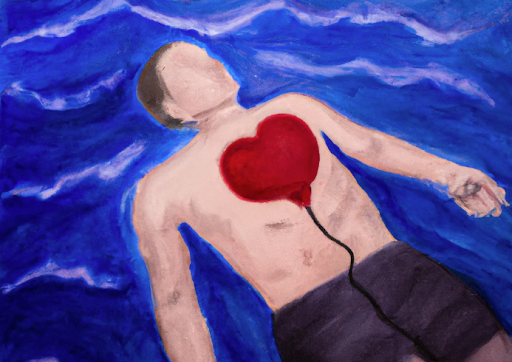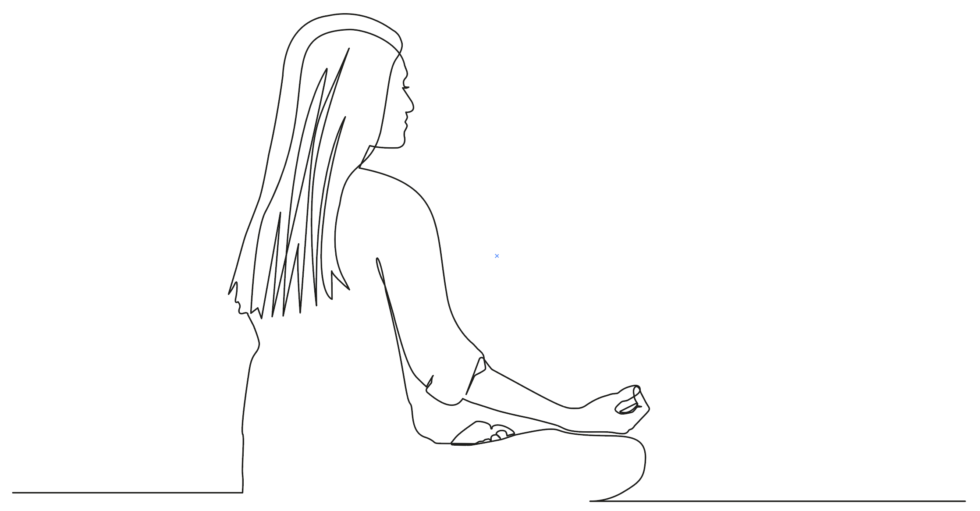Improve Thyself: Betterment by Buoyancy

Imagine yourself – who are you and where are you REALLY going?
What do you truly know about yourself?
You’ve found your parking spot, stop to take a few conscious breaths after turning off your car, and step out. You take the short walk to our float center, and as you open the door you’re greeted by our welcoming staff and feel instantly relaxed and at home. You sit down in a comfortable chair, wait for your room to be ready, and ponder on how floating has helped you connect with yourself.
As you reflect on the familiar sensation of letting go into your private sea, the question naturally arises: what else can floating help with?
Many people float to find their baseline – whether that be for general relaxation, “me” time (away from kids, partners, work, friends and family), basic physical recovery, or even just paying off some sleep debt. For others, though, floating as a practice has more of a pointed goal to it – something specific that you’re looking to achieve, whether it be physical, emotional, intellectual, or spiritual. Since one of the most fascinating things about floating is how versatile it can be, and how it appeals to people in so many different walks of life, we wanted to run through some different ways floating is used for self-improvement
.
Physical
In the physical realm, goals could be performance oriented: improving running times, training for an event or marathon, or improving precision skills required for something like disc golf. Several NFL, NBA, and MLB teams use floating as part of an action/recovery plan, along with other organizations such as the Australian Institute of Sport and the UFC Performance Institute Shanghai.
There have been a host of studies on the effectiveness of floating for this kind of training, from tennis players pushing past skill plateaus, to improved marksmanship in archery and rifle shooting, to shortened recovery times and less muscle soreness for heavy physical training. Incorporating floating into your training routine can help with injury prevention both before and during an event, and has even been shown to speed up reaction time.
Improving as an athlete, or in your physical performance, is only one of many acute goals that regular floaters come in for. Other areas for development in conjunction with floating include:
● Spinal decompression
● Relief from arthritis and fibromyalgia
● Stretching (something called “Floga”)
● Swifter recovery from surgery/injuries
● Aiding in body work and physical therapy
● Reducing high blood pressure
● Improving quality of sleep
Emotional
Another interesting way that people use floating for self-improvement is related to emotions, and emotional regulation. Many people find the solitude of the float tank provides a perfect space for emotional healing, as it can help turn off the ordinary chatter and running narratives that our mind is always creating.
Deep relaxation in the float tank has a way of lending perspective on ourselves, or a particular relationship, as we are able to fully immerse and reflect. Whether it’s examining habits in your life that you want to adjust, or processing interactions with others that you wish were different, having a perfectly comfortable environment with no distractions is a tremendous tool.
Floaters have even referred to their time in a float tank as a salty therapy session, without the therapist. Here are just a few examples of emotional work that people do while floating:
● Working through past issues and traumas
● Coming to terms with a breakup or divorce
● Finding balance and insight with work relationships
● Floating before or after intentional communication with a significant other
● Floating while pregnant to connect with the baby
Intellectual
Some people use floating to help learn new skills or solve difficult problems. Used before studying, floating can calm your nerves and help you to stay focused and attentive to the subject at hand. Used after you’ve absorbed a lot of information (like when you’re cramming for finals) is the perfect way to cement and internalize everything you just took in.
In addition to pure knowledge absorption, floating has also been shown to produce more subjective creativity in tasks as disparate as problem solving, writing, and jazz improvisation. Other mental goals that people float for include:
● Breaking through writer’s block
Michael Crichton reportedly floated for precisely this purpose.
● Learning languages
Apparently US Navy SEAL team 6 has used floating to reduce language acquisition time dramatically, although they haven’t released their studies to the public
● Solving challenging problems
From architects to programmers to artists to mathematicians – people have found the float tank to be the perfect place for examining complicated challenges
● Memorization and Recall
Without constant distraction and disruption, our ability to review and recall new information increases, as does long term retention of that information.
Spiritual
There are many who are attracted to floating as a method for enhancing their spiritual practices. This obviously means different things to different people, and the strategies involved are just as diverse. Most commonly, these will take the form of:
● Meditation
Goals here can range in scope from practicing mindfulness, to achieving a pleasurable physical state, to separation from the mind/body, all the way to full samadhi and even out-of-body experiences.
● Breath-work
Some people find breath-work in the tank to be a very immersive and beneficial experience. This can range from simple awareness of the breath as a point of concentration to a variety of more advanced breathing techniques.
● Self-Hypnosis
Floating naturally puts you into a hypnogogic state, and learning to manipulate that for hypnosis is a popular strategy for self-exploration and development. Self-suggestion can be powerful, especially when deep in the theta state.
● Dream work / Lucid Dreaming
With the dreamy, half-awake/half-asleep state that most floaters are familiar with, it’s easy to see how the tank could be used to encourage lucid dreaming, and work on better dream recall in general. Many people will use a “float journal” (in addition to a dream journal) as a further aid in the process.
● Self-reflection
This comes very naturally in the float tank anyway, and is perhaps the most informal item on this list. Nonetheless, there is a lot to be gained from the simple act of reflecting on your life and goals – noticing areas that may be able to use improvement and acknowledging the progress that you’ve already made.
Next time you schedule a float, try spending a little time beforehand pondering if there’s anything specific you might want to work on during your session. You can always ask your friendly float attendant for more ideas, and for help creating a personal plan if you’re interested in exploring the benefits of floating for a set purpose.
Stay inspired out there, and see you in the shop soon!
Ready to work with Float North County?
Let's connect! We’re here to help.
Send us a message and we’ll be in touch.
Or give us a call today at (858) 925-6069







